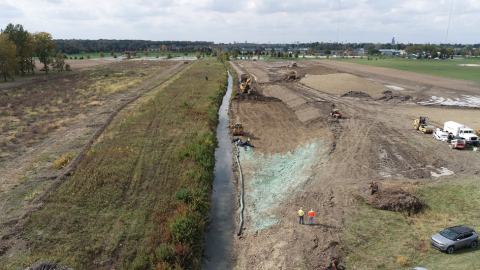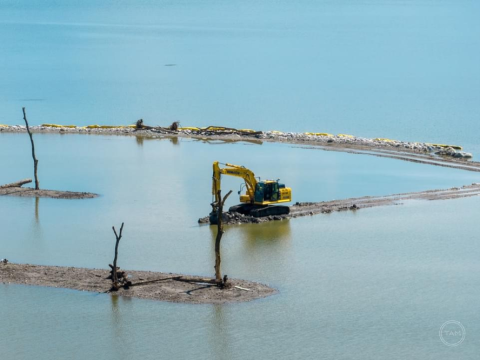Author: Cottage Life
NOAA’s Great Lakes Bay Watershed Education and Training Program Announces 2024 Awards
NOAA’s Great Lakes Bay Watershed Education and Training Program Announces 2024 Awards
josterme01
Fri, 09/20/2024 – 1:02 pm

NOAA Great Lakes Bay Watershed Education and Training (B-WET) program announced $652,117 in funding for seven environmental education projects throughout the Great Lakes basin. Great Lakes B-WET awards are funded through the Great Lakes Restoration Initiative (GLRI). Each project will address one of the three priority areas of the Great Lakes B-WET program: (1) new projects that use the Meaningful Watershed Educational Experiences framework (MWEE), (2) Systemic MWEE Implementation, or (3) Capacity building for expanded statewide K-12 environmental literacy initiatives.
The funded projects throughout the Great Lakes basin are:
- Cuyahoga Soil and Water Conservation District: Implementing Meaningful Watershed Educational Experiences in the Tinker’s Creek Watershed
- Friends of the St. Clair River: St. Clair River Watershed Pen Pals: From Creeks to Coast
- Great Lakes Stewardship Initiative: Advancing K-12 Environmental Literacy through Place-Based Stewardship Education (PBSE) in Michigan and the Great Lakes Region
- Huron-Clinton Metropolitan Authority: Science and Stewardship in the Heart of the Great Lakes
- ODC Network: River Keepers: Understanding the Impacts of Human Activity and Climate Change on Local Watersheds
- Riveredge Nature Center Inc: Water Journeys: Empowering Middle-Schoolers to Improve the Milwaukee River
- University of Michigan at Ann Arbor: Climate Change in the Bay: Designing Meaningful Student Experiences in the Saginaw Bay Watershed
Read more about each of these projects, and projects funded in previous years, at https://sanctuaries.noaa.gov/bwet/greatlakes/
NOAA B-WET is an environmental education program that promotes place-based experiential learning for K-12 students and related professional development for teachers. B-WET fosters the growth of new, innovative programs and encourages capacity-building and environmental education partnerships. The primary delivery of B-WET is through competitive grants that promote Meaningful Watershed Educational Experiences (MWEEs). The MWEE is a learner-centered framework that focuses on investigations into local environmental issues and leads to informed stewardship action.
For more information about Great Lakes B-WET, please contact Sarah Waters (sarah.a.waters@noaa.gov).
$4.2 Million Recommended for Great Lakes Habitat Restoration
$4.2 Million Recommended for Great Lakes Habitat Restoration
josterme01
Wed, 09/18/2024 – 2:30 pm
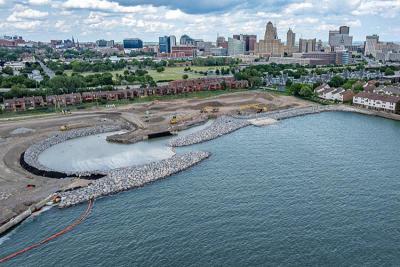
NOAA Fisheries is recommending $4.2 million in Great Lakes Restoration Initiative funding to continue ongoing work restoring important habitat in the Great Lakes. Through this funding, partners will implement projects that support fisheries, habitats, and communities in Great Lakes ecosystems.
NOAA Fisheries is recommending funding to continue the work of three ongoing cooperative agreements:
- Ducks Unlimited will develop plans to restore wetland habitat at Camp Sabroske in Ohio, contributing toward restoring the Maumee Area of Concern. ($752,000)
- The Great Lakes Commission will implement several high priority habitat restoration projects in the Great Lakes region, including in the Maumee Area of Concern in Ohio and the Niagara River Area of Concern in New York. ($3.1 million)
- Genesee County, Michigan, will contribute to the removal of the Hamilton Dam on the Flint River, opening nearly 25 miles to fish passage. ($341,000)
As the largest freshwater system on earth, the Great Lakes are one of the most important natural resources in the world. They support valuable commercial, recreational, and tribal fisheries, as well as industry, transportation, and tourism. This funding will help sustain the many benefits the Great Lakes provide to the environment and communities by:
- Supporting valuable fisheries and coastal resources
- Improving the quality of our water by restoring coastal wetlands
- Providing recreational opportunities for people to use and enjoy
- Increasing the resilience of Great Lakes communities
The Office of Habitat Conservation’s NOAA Restoration Center works in the Great Lakes to support the ecosystems and economies that rely on these valuable international resources. Since 2010, we have supported 98 projects through the Great Lakes Restoration Initiative. These projects have restored more than 5,100 acres of habitat for fish and wildlife and opened more than 520 miles of rivers and streams to fish migration.
Major Strides in Maumee AOC Restoration as 17 GLRI-Funded Projects Advance
Major Strides in Maumee AOC Restoration as 17 GLRI-Funded Projects Advance
josterme01
Mon, 09/09/2024 – 11:27 am

Significant improvements are underway in the Maumee AOC as construction of 17 projects was recently completed, is underway, or is soon to-begin. Each project will address one or more Beneficial Use Impairments (BUIs) within the AOC. BUIs are designations identified in the 1987 amendment to the Great Lakes Water Quality Agreement that represent different types of environmental degradation (see Beneficial Use Impairments for the Great Lakes AOCs to learn more). Most of these projects will address the Degradation of Fish and Wildlife Populations, Degradation of Benthos (small aquatic organisms living in bottom sediment), and Loss of Fish and Wildlife Habitat BUIs.
Projects with Construction Complete(d) Summer 2024
- Hill Ditch Restoration at Toledo Natural Science Technology Center: This project restored the stream’s natural path and movement, stabilized 700 feet of eroding streambank, enhanced 650 feet of streamside habitat, and improved macroinvertebrate habitat. Additionally, the restored habitat is already providing students at the adjacent Toledo Natural Science Technology Center with an opportunity for hands-on engagement with concepts of stream ecology and restoration.
- Wetland Enhancement in the Riverine at Turtle Creek: This project restored local wetlands to allow for water infiltration into the soil and improve water quality. Additionally, the work enhanced the overall quality of aquatic habitat while maintaining existing protections against flooding upstream.
- Stream Restoration at the Oregon Recreational Complex: This project stabilized 5,300 linear feet of eroding and incised streambanks in Wolf Creek, creating important habitat features that allow fish to rest, hunt, and hide from predators. Additionally, the project will reduce non-point source pollution from agricultural runoff and excess sediment. The project’s location within the Oregon Recreational Complex has allowed the public to observe the process and results of stream restoration in real time.
- Maumee Bay State Park Waterfowl Deterrent: This project seeks to address closures and posted advisories for the park’s inland lake beach caused by high levels of bacteria from waterfowl (primarily geese) in the area. Selective plantings were used to disrupt the birds’ ability to scan the whole beach for predators, thereby discouraging their use of the area and reducing associated bacteria concentrations The plantings will also increase pollinator habitat and the area’s aesthetic value for beachgoers.
Projects Currently Under Construction
- Maumee State Forest Expansion: The project is being implemented at several sites that will expand the State Forest by approximately 150 acres. Some of these sites have converted farmland to either wetland or forest, restoring important wildlife habitat. This effort is the last remaining project being implemented to address the wildlife portion of Loss of Fish and Wildlife Habitat BUI in the AOC.
- Delaware Islands Complex Restoration: This project is designed to recreate valuable island habitat and protect areas that are currently at risk of erosion and loss due to increased water levels and flooding events. Shallow waters surrounding islands complexes are associated with high fish and benthic biodiversity.
- Packer Stream Restoration near Genoa State Route 163: The section of Packer Creek is continuously eroding and lacks valuable habitat features for fish and benthic communities. The project’s stream restoration work across several sites will improve habitat conditions along a total of 4,700 feet of streambank and create 18 acres of wetlands.
Projects with Construction Underway Soon
- Hill Ditch at Paisley Park: This project is designed to improve degraded benthic communities by widening the stream and creating more natural bends in its path. Additionally, the project will connect the ditch to a newly established wetland and improved riparian habitat. The location of this project provides a unique opportunity for stream restoration in a highly urbanized area.
- Audubon State Nature Preserve Islands Restoration: This project seeks to protect and enhance valuable island habitat in the mainstem of the Maumee River. The shallow waters around islands provide important habitat to both fish and benthic organisms. However, this island complex is at risk of erosion and loss due to higher water levels in Lake Erie and flooding.
- Channel Addition and Wetland Enhancement/Reconnection: This project aims to increase connectivity between Turtle Creek and nearby wetlands at two sites, as well as to enhance 17 acres of wetland habitat. Further, the project is expected to create 1,730 feet of habitat, contributing to the diversity of wetland types and nursery habitat for fish.
- Berlin Avenue Floodplain and Stream Improvements: This project will restore wetlands, increase instream and streambank cover, and capture storm water runoff, resulting in improved aquatic habitat along 2,200 feet of Otter Creek.
- Taylor Rd. and Yarrow St. Floodplain and Stream Improvements: The project is designed to restore vernal pool and streamside wetland habitat, improve instream cover, enhance 900 feet of riparian buffer, and capture stormwater runoff.
- Neis Ditch Stream Restoration: This project is designed to stabilize eroding streambanks and improve instream habitat, building on previous stream restoration work by Metroparks Toledo. Additionally, the work will enhance or create vegetated buffers along the stream and expand access to nearby floodplain. Residents will benefit from a reduction in flood risk and excess sediment/nutrient runoff, which will in turn improve Lake Erie’s water quality.
- Blue Creek Restoration at Blue Creek Metropark: This project is designed to stabilize 500 feet of eroding streambanks and improve instream habitat. The project will create important stream habitat features that support benthic organisms and allow fish to hunt, rest, and hide
- Maumee State Forest Blue Creek Stream Restoration at Hight Tract: This project is designed to improve degraded fish habitat in a conservation area owned by Ohio Department of Natural Resources (ODNR). The work will stabilize and prevent bank erosion, increase streamside and instream habitat, and divert runoff from nearby roads before it reaches the water.
- Stream Restoration at Lathrup Park: This project is designed to restore an eroded section of Tenmile Creek by creating and enhancing important in-stream and streamside habitat. In addition to providing habitat for fish, the work will also improve degraded benthic communities and improve the creek’s resilience to intense storms.
- Restoration of the Ottawa River within Jermain Park: This project aims to enhance habitat for fish and benthic organisms in one of the few undeveloped, forested areas adjacent to the lower sections of the Ottawa river. The work will stabilize 2,300 feet of eroding streambank and enhance 2.7 acres of wetland through diverse, native plantings.
$12 Million Available for Great Lakes Habitat Restoration
$12 Million Available for Great Lakes Habitat Restoration
josterme01
Thu, 09/05/2024 – 10:25 am
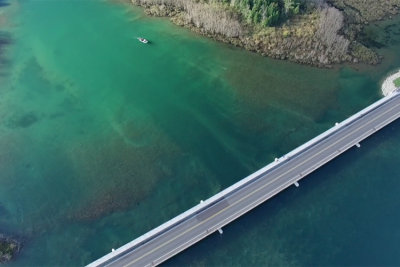
NOAA has announced the availability of up to $12 million in Great Lakes Restoration Initiative funding to continue our work restoring habitat for Great Lakes native fisheries. We are seeking proposals for projects that restore Great Lakes habitats and lead to significant and sustainable benefits for Great Lakes native fish species.
Applications will be accepted and considered on an annual basis. To be considered for funding in the 2025 federal fiscal year, applications are due by October 28, 2024. For funding in FY2026 and FY2027, applications will be due by September 5, 2025, and September 4, 2026, respectively.
For more information, view the NOAA Great Lakes Fish Habitat Restoration Partnership Grants funding opportunity. NOAA will also be hosting a public webinar on Friday, September 13 at 1 p.m. ET where potential applicants can learn more about the funding opportunity.
EPA Will Soon Announce New Funding Opportunity Great Lakes Restoration Initiative
EPA Will Soon Announce New Funding Opportunity Great Lakes Restoration Initiative
josterme01
Wed, 09/04/2024 – 1:56 pm
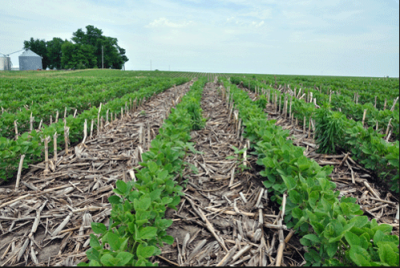
EPA expects to announce a new, competitive funding opportunity within the next month under the Great Lakes Restoration Initiative. The opportunity will be for up to $4 million to support phosphorus reduction efforts in the western Lake Erie basin through farmer outreach and technical assistance. This preliminary announcement is intended to alert potential applicants of this upcoming funding opportunity. Once the full funding opportunity is formally announced by EPA, applicants are expected have between 45 to 60 days to apply.
The primary objective of this funding opportunity will be to increase the resources available to help farmers improve their nutrient management. EPA will plan to support projects that do one or more of the following:
- Provide technical assistance to prevent overapplication and loss of fertilizers from farm fields, particularly manure.
- Build capacity of Soil and Water Conservation Districts to provide engineering services, administrative support, and establish relationships with their community.
- Support direct outreach and farmer education by extensions, industry, and farm bureaus.
- Incentivize retailers, conservation agronomists, and certified crop advisors to promote minimal fertilizer application, precision technology, and subsurface placement of nutrients.
Projects will be required to be located within the western Lake Erie watershed within these hydrologic unit code boundaries:
- 04100001 Ottawa
- 04100002 River Raisin
- 04100003 St. Joseph
- 04100004 St. Marys
- 04100005 Upper Maumee
- 04100006 Tiffin
- 04100007 Auglaize
- 04100008 Blanchard
- 04100009 Lower Maumee
- 04100010 Cedar-Portage
Eligibility
Qualified non-federal entities eligible to apply for grants include non-federal governmental entities: State agencies; any agency or instrumentality of local government; interstate agencies; and federally recognized tribes and tribal organizations. Institutions of Higher Education and non-profit organizations are also eligible to apply. Non-profit organizations described in Section 501(c)(4) of the Internal Revenue Code that engage in lobbying activities as defined in Section 3 of the Lobbying Disclosure Act of 1995 are not eligible applicants as provided in the Lobbying Disclosure Act, 2 U.S.C. 1611. ‘For profit’ organizations, federal agencies, foreign entities, and individuals are not eligible applicants.
Projected Timeline
EPA anticipates issuing this funding opportunity on www.grants.gov by the end of September 2024. More details will be available in the formal notice.










